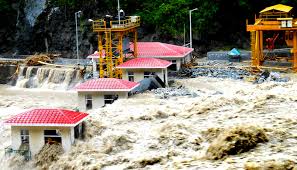
Flash flood incident in Uttarakhand is another warning of the dangers that a Himalayan state like Uttarakhand faces from natural processes like landslides, snow avalanches cloudbursts or lake bursts.
Daily Current Affairs Quiz 2021
As we saw in 2013 in the same state, such processes can trigger much bigger disasters and cause massive destruction. But it is possible to work towards minimising the threat of such incidents and reduce their impact.
Glaciers are the largest source of freshwater outside of the polar regions. Glaciers and snow melt in the Himalayan ecosystem are the source of water for several rivers across the subcontinent, and are responsible for maintaining the perennial supply of water in the river systems like the Indus, Ganges, and Brahmaputra to over a billion people.
But these glaciers have reduced considerably in mass and surface area since the little ice age period.
Some models predict that an increase in global temperatures by 2°C from 1850 by 2070 would result in 45% of the medium and large glaciers (10 sq km or more) disappearing completely. Nearly 70% smaller glaciers are likely to melt away.
Shrinking glaciers have led to the formation of a large number of glacial lakes all across the Himalayas. Many of these high-altitude lakes are potentially dangerous, because of their potential to cause flash floods in the event of a breach.
A 2005 study by Kathmandu-based ICIMOD (International Centre for Integrated Mountain Development) had listed 127 such lakes in Uttarakhand. More recent studies put the number of such lakes in the state at around 400.





